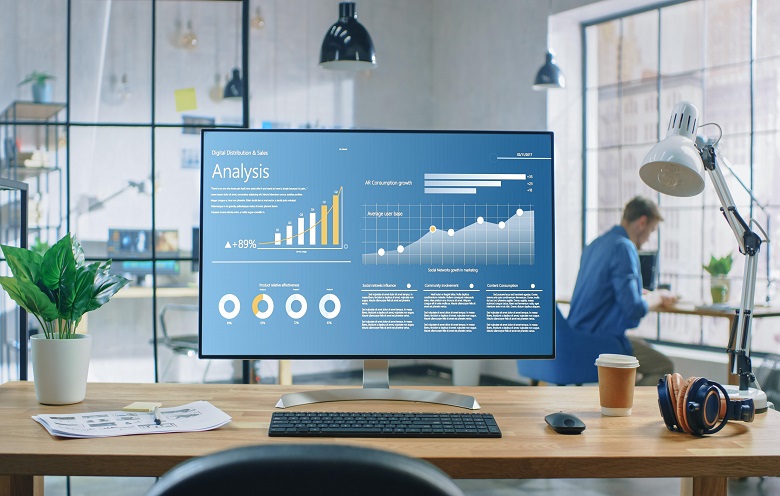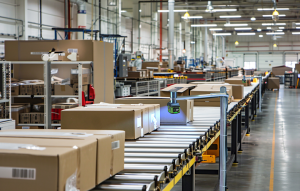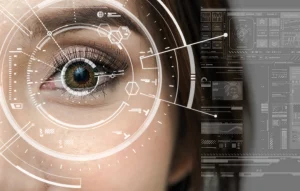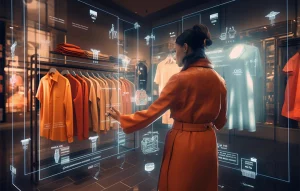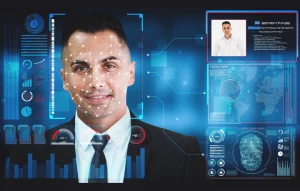Modern organizations across industries are harnessing the power of data to optimize processes, enhance customer experiences, and drive growth. Amid this digital transformation, video analytics emerges as a pivotal tool, revolutionizing how businesses extract valuable insights from visual content.
The video analytics market size is estimated at USD 2.96 billion in 2024 and is expected to reach USD 6.01 billion by 2029. – Modor Intelligence
Video analytics entails extracting valuable insights from video footage. This process encompasses a range of tasks, from tallying the number of individuals within a video to pinpointing specific objects or identifying particular individuals.
It represents the convergence of computer vision, machine learning, and video processing. Its primary objective is to automatically recognize temporal and spatial events within video streams. Let us delve deeper into what this entails:
How computer vision powers intelligent video analytics
Intelligent video analytics represents the fusion of computer vision and artificial intelligence (AI), revolutionizing how organizations extract actionable insights from video footage. Let us see how computer vision plays a pivotal role in empowering intelligent video analytics:
Understanding computer vision
Computer vision is a subfield of AI that equips machines with the ability to interpret visual data-images and videos. It mimics human vision by enabling machines to recognize patterns, objects, and context within visual content. Here’s how computer vision powers intelligent video analytics:
1. Deep learning for video analysis:
i. Deep learning, a subset of machine learning, employs neural networks to learn intricate patterns from data. These networks consist of interconnected layers of processing nodes.
ii. In the context of video analytics, deep learning algorithms excel at:
- Object detection and tracking: Identifying and tracking specific objects within video sequences. Techniques like convolutional neural networks (CNNs) learn complex patterns and enable real-time detection.
- Action recognition: Recognizing specific actions or events in videos, such as a person entering a restricted area or a vehicle running a red light.
2. Real-time object detection:
- Video analytics demands real-time responsiveness. Deep learning models, including Mask R-CNN, YOLOv3, YOLOR, and YOLOv7, excel at detecting objects in video streams.
- These models can be custom trained using collected video data or pre-trained on large image datasets like MS COCO.
- Imagine a security camera instantly identifying an intruder or a retail system tracking customer movements as they browse shelves.
3. Business-specific tasks:
Computer vision systems, powered by deep learning, tackle complex tasks tailored to business needs:
- Person detection: Identifying individuals in crowded spaces, enhancing security and safety.
- Facial recognition: Personalizing customer experiences, securing access, and preventing fraud.
- Quality inspection: Ensuring product quality on assembly lines.
- Activity recognition: Monitoring employee behavior, optimizing workflows, and ensuring compliance.
4. Scalability, accuracy, and integration
For successful implementation of intelligent video analytics, consider the following:
i. Scalability:
- As video data volumes grow, choose scalable solutions that seamlessly handle expanding camera networks.
- Scalability ensures your system adapts to changing business requirements without compromising performance.
ii. Accuracy and robustness:
- Invest in robust deep learning algorithms to minimize false positives and negatives.
- Accuracy is crucial for reliable insights and decision-making.
iii. Integration:
Integrate video analytics with existing systems:
- Security Infrastructure: Enhances surveillance and threat detection.
- Operations: Optimizes processes and resource allocation.
- Business intelligence: Extracts valuable insights for strategic planning.
The future of business insights
Computer vision, embedded in intelligent video analytics, captures more than mere images—it captures insights that shape the future of business. As technology advances, organizations leveraging video analytics gain a competitive edge in an increasingly visual world.
What are the benefits of video analytics?
Whether you are a retail giant, a smart city planner, or a security-conscious enterprise, video analytics can revolutionize the way you operate and make informed decisions, let us take a look:
1. Enhanced security and safety
Video analytics enhances security by intelligently analyzing surveillance feeds, automatically detecting anomalies, unauthorized access, and potential threats, ensuring a safer environment.
2. Operational efficiency
- Retail optimization: Video analytics tracks customer footfall, dwell times, and popular product zones. It helps retailers to fine-tune store layouts, allocate staff efficiently, and enhance customer experiences.
- Traffic management: Smart cities leverage video analytics to monitor traffic flow, identify congestion points, and dynamically adjust signal timings. This not only reduces commute times but also minimizes the environmental impact.
3. Customer insights and experience
- Heatmaps: It helps businesses identify hotspots and strategically position products or promotional displays.
- Demographics: Video analytics can estimate age, gender, and even emotional states of customers to help businesses tailor their offerings based on real-time demographic data.
4. Cost savings
- Personnel costs: Instead of relying solely on human operators to monitor multiple cameras, video analytics automates the process. This reduces the need for extensive workforce.
- Predictive maintenance: In manufacturing or critical infrastructure, video analytics can predict equipment failures by analyzing subtle changes in machinery behavior. Timely maintenance prevents costly breakdowns.
5. Compliance and quality control
Industries like pharmaceuticals, food production, and logistics adhere to strict quality standards. Video analytics ensures compliance by monitoring processes, detecting deviations, and flagging anomalies. Whether it is verifying adherence to safety protocols or tracking product defects on assembly lines, video analytics maintains quality and regulatory compliance.
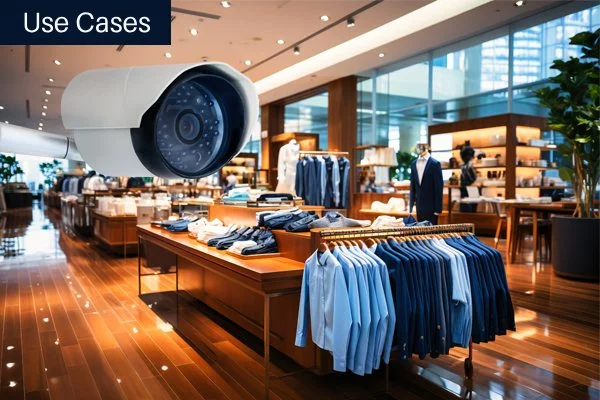
Explore 10 comprehensive use cases of computer vision in retail
Get ahead in fast-paced world with cutting-edge tech. This document dives into how it enhances customer experience, streamlines operations, and makes you a retail frontrunner.
6. Business intelligence
Video analytics is not just about security; it is a treasure trove of business intelligence. By analyzing customer flows, employee productivity, and operational bottlenecks, organizations gain actionable insights. These insights drive strategic decisions, improve resource allocation, and boost overall performance.
Challenges of video analytics and how to solve them:
1. Data volume and processing complexity – Enterprises must opt for scalable infrastructure and leverage advanced algorithms for efficient data management and analysis.
2. Accuracy and reliability – Fine-tune models, incorporate advanced machine learning techniques, and regularly validate algorithms against ground truth data.
3. Privacy and ethics – Adhere to legal frameworks, data anonymization practices, and transparent policies to safeguard privacy while leveraging video analytics for enhanced security.
4. Scalability and cost – Embrace cloud-based solutions and modular architecture. For cost management, conduct TCO analysis and optimize resource utilization.
5. Integration with existing systems – To overcome integration complexity, prioritize interoperability and invest in custom solutions where necessary.
6. Evolving threats and adversarial attacks – Implement robust security protocols and regularly update algorithms for enhanced resilience. Conduct thorough threat assessments and collaborate with cybersecurity experts to fortify defenses against emerging risks.
Unlocking AI-powered video analytics
AI-powered video analytics stands as a beacon of innovation. Organizations across industries are harnessing the potential of visual data to gain actionable insights, enhance security, and optimize operations through the following techniques:
1. Object recognition
Object recognition is the cornerstone of video analytics. It enables systems to identify and classify objects within video streams. Whether it is recognizing a person’s face, detecting a specific vehicle, or identifying inventory items on a retail shelf, object recognition empowers businesses to extract meaningful information. Advanced deep learning models, such as convolutional neural networks (CNNs), excel at this task by learning intricate patterns and features from visual data.
Business impact:
- Retail: Enhance inventory management by automatically identifying out-of-stock items or misplaced products.
- Security: Detect unauthorized individuals or suspicious objects in real time.
2. Object detection
Object detection takes recognition a step further. Instead of merely identifying objects, it precisely locates them within frames. This technique involves drawing bounding boxes around detected objects, providing spatial context. Faster R-CNN, YOLO (You Only Look Once), and SSD (Single Shot MultiBox Detector) are popular object detection architectures. From traffic management to industrial safety, object detection fuels efficiency and safety.
Business impact:
- Smart cities: Monitor traffic flow, identify parking violations, and optimize urban planning.
- Manufacturing: Ensure worker safety by detecting anomalies near machinery.
3. Object tracking
Object tracking adds temporal continuity to the mix. It traces an object’s movement across frames, maintaining its identity. Whether it is monitoring a suspect in a crowded area or tracking a delivery drone, this technique ensures seamless surveillance. Kalman filters, deep SORT (Simple Online and Realtime Tracking), and correlation-based trackers are commonly used for object tracking.
Business impact:
- Logistics: Track shipments, monitor delivery routes, and optimize supply chain logistics.
- Entertainment: Enable immersive augmented reality experiences by tracking moving objects.
Opportunity for new business value
As organizations embrace video analytics, they embark on a journey toward unprecedented business value. The convergence of AI, data, and visual insights opens doors to innovation, efficiency, and strategic decision-making. Whether it is optimizing retail spaces, ensuring safety in smart cities, or enhancing customer experiences, video analytics transcends surveillance to become a catalyst for growth. The lens captures more than images—it captures opportunities. Seize them and let video analytics propel your business into the future.


